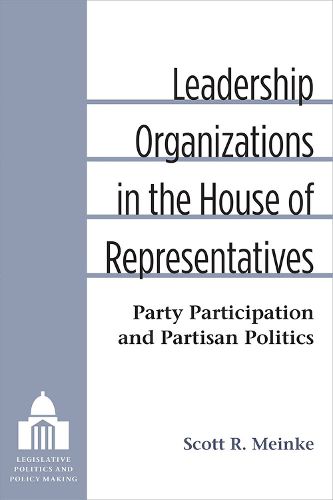Readings Newsletter
Become a Readings Member to make your shopping experience even easier.
Sign in or sign up for free!
You’re not far away from qualifying for FREE standard shipping within Australia
You’ve qualified for FREE standard shipping within Australia
The cart is loading…






In recent Congresses, roughly half of the members of the U.S. House of Representatives served in whip organizations and on party committees. Rank-and-file representatives who use party service to advance their own careers benefit from this growing rate of participation in the party hierarchy, as do the party leaders who use participation in order to advance the party’s agenda through coordination, communication, and persuasion.
According to Scott R. Meinke, however, rising electoral competition and polarization over the past 40 years have altered the nature of party participation. In the 1970s and 1980s, the participation of a wide range of members was crucial to building consensus. Since then, in the partisan battle for control of the chamber, organizations responsible for coordination in the party have become dominated by those who follow the party line. At the same time, key leaders in the House use participatory organizations less as forums for internal deliberations over policy and strategy than as channels for exchanging information with supporters outside Congress and broadcasting sharply partisan campaign messages to the public.
This transformation of leadership organizations generally serves a party’s collective goals in an era of close electoral competition and ideological polarization. Yet it also hinders a party’s ability to reach a strategic consensus over divisive issues and to develop its own policy alternatives.
$9.00 standard shipping within Australia
FREE standard shipping within Australia for orders over $100.00
Express & International shipping calculated at checkout
In recent Congresses, roughly half of the members of the U.S. House of Representatives served in whip organizations and on party committees. Rank-and-file representatives who use party service to advance their own careers benefit from this growing rate of participation in the party hierarchy, as do the party leaders who use participation in order to advance the party’s agenda through coordination, communication, and persuasion.
According to Scott R. Meinke, however, rising electoral competition and polarization over the past 40 years have altered the nature of party participation. In the 1970s and 1980s, the participation of a wide range of members was crucial to building consensus. Since then, in the partisan battle for control of the chamber, organizations responsible for coordination in the party have become dominated by those who follow the party line. At the same time, key leaders in the House use participatory organizations less as forums for internal deliberations over policy and strategy than as channels for exchanging information with supporters outside Congress and broadcasting sharply partisan campaign messages to the public.
This transformation of leadership organizations generally serves a party’s collective goals in an era of close electoral competition and ideological polarization. Yet it also hinders a party’s ability to reach a strategic consensus over divisive issues and to develop its own policy alternatives.